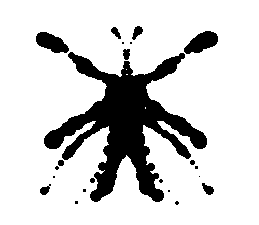

He used to test them out on young people who had been institutionalised and schizophrenics, asking them what they saw. They were the result of meticulous work, with Rorschach reworking every detail. "The inkblots used in the test weren't just created by chance. Rorschach created his test by developing around a hundred different studies of inkblots of varying degrees of complexity, but each one showing an (imperfect) mirror symmetry. What interested him was the ambiguous nature of such composite images, like a cat-frog or a squirrel-cockerel," explains psychologist Sadegh Nashat, a lecturer at the University of Geneva and authority on Rorschach's work, whose archives he has studied at the University of Bern. During his time in Russia, he collected newspaper drawings that often showed hidden elements behind the main image. "Hermann Rorschach had a keen interest in optical illusions. Since then, the Rorschach test has become known all over the world. As for Rorschach, whose father had been an art teacher, there was a considerable period of hesitation before he opted for a medical career over an artistic one. Rorschach's professor and PhD adviser was Eugen Bleuler, famous for having coined the term schizophrenia and been instrumental in introducing psychoanalysis to Switzerland.


The Rorschach test was developed in Zurich and is named after the psychiatrist who invented it, Hermann Rorschach (1884–1922), who used to practice at the Psychiatric University Hospital Zurich, known as the Burghölzli.


 0 kommentar(er)
0 kommentar(er)
